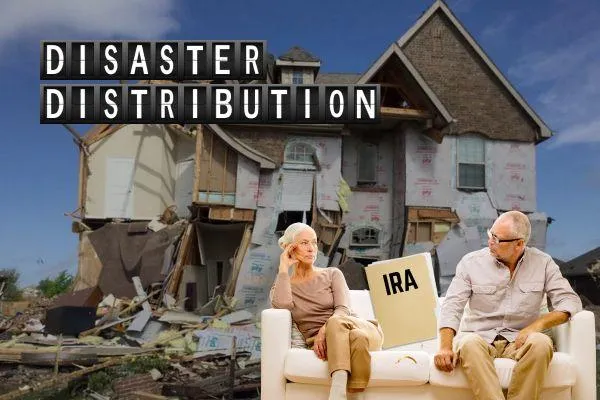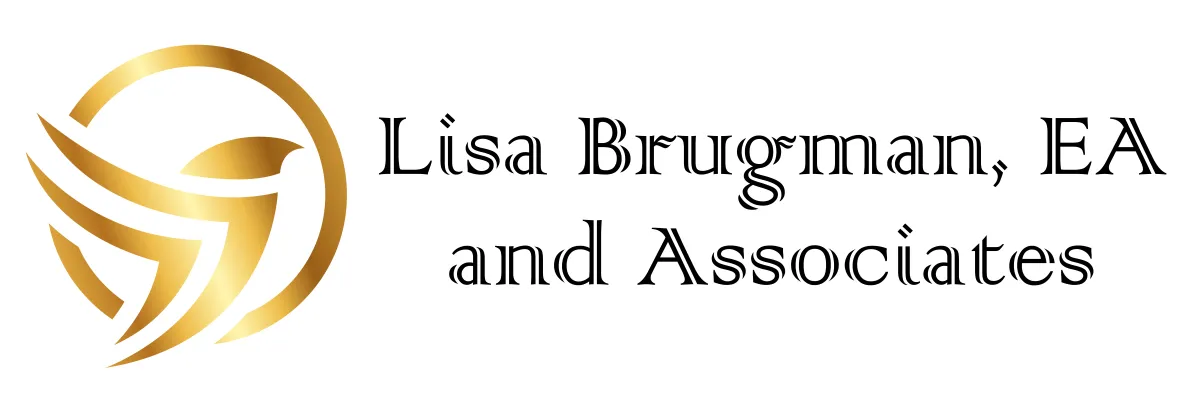BLOG

Disaster Distribution
Disaster Distributions from Retirement Accounts: What You Really Need to Know
If you've recently been impacted by a natural disaster like a hurricane, wildfire, or flood, you're probably juggling a lot—repairs, insurance claims, and just trying to get back on your feet. There is one lifeline you might not know about. Disaster distributions from your retirement account. These can offer crucial financial support when you need it most. In this post, we’ll break down what these distributions are, how they work, and what tax implications you should consider before tapping into your retirement savings.
So, What Is a Disaster Distribution?
A disaster distribution is a special type of withdrawal from a retirement account—like a 401(k) or IRA—that's allowed when there's a federally declared disaster. These withdrawals are designed to give you quick access to cash when you're dealing with the unexpected: think floods, wildfires, hurricanes, or earthquakes.
The IRS usually steps in with tax relief after a disaster—things like pushing back deadlines and waiving certain penalties. In the past, these disaster distributions were approved on a case-by-case basis. But now, thanks to the SECURE 2.0 Act of 2022, there’s a standing rule for any federally declared major disaster that happens on or after January 26, 2021. That’s great news—it means more clarity and consistency.
Who Qualifies?
Not everyone can take advantage of a disaster distribution, so let’s go over the basics. You must be:
Someone whose main home is in the disaster area during the incident period (as defined by FEMA), and
Someone who experienced an economic loss—like home damage, job loss, or temporary relocation.
Also, it must be a major disaster, not just an “emergency.” Only major disasters get the green light for these special withdrawals.
You can always check the FEMA website to see whether your area qualifies.
Two Paths: Disaster Distributions vs. Disaster Loans
There are two ways to access your retirement savings in the aftermath of a disaster:
1. Disaster Recovery Distributions
These are withdrawals made during a disaster recovery period and offer a way to access funds without the early withdrawal penalty, even if you’re under age 59½.
Here’s what you need to know:
You can take up to $22,000 total from all retirement accounts.
The amount is taxable, but you can spread it over 3 years on your tax return—or report it all at once, depending on what works best for your situation.
You’ll receive a Form 1099-R and will need to include it in your tax return.
You can choose to repay the distribution within three years to restore your retirement savings and possibly claim a refund of the taxes you paid.
💡 Example:
John took out $21,000 from his 401(k) after a hurricane damaged his home. He reported $7,000 of income on his 2022, 2023, and 2024 returns. In 2024, once his finances stabilized, he repaid the full $21,000 and amended his previous tax returns to get a refund for the taxes he had paid.
2. Disaster Loans
A loan is different from a distribution because you're borrowing against your retirement savings—and you have to pay it back.
Here’s how they work:
You can usually borrow up to 50% of your vested account balance, up to a max of $50,000.
If your balance is less than $10,000, you can borrow the entire amount.
Thanks to SECURE 2.0, your employer may allow loans up to $100,000 or even the full vested balance in your 401k.
Repayment terms usually run 5 years, and you must make quarterly payments.
💡 Example:
Let’s go back to John. He has $75,000 in his fully vested 401(k). Under normal rules, he could borrow $37,500. But after the hurricane, his employer allowed him to borrow the full $75,000. As long as he sticks to the repayment schedule, there’s no tax hit. If he defaults, though—by not repaying on time or leaving his job without settling the loan—it becomes a taxable distribution.
The Repayment Option (If You Want to Put the Money Back)
Here's the good news: If you're able to repay your disaster distribution within 3 years, it's like it never happened. You can claim a refund on the taxes you paid and rebuild your retirement savings. Just be sure to:
Keep excellent records of the repayment.
Amend your tax returns if you've already filed and paid taxes on the income.
Use Form 8915-F to report and track these transactions (instructions are available on the IRS site).
Final Thoughts
Natural disasters can be overwhelming, but knowing your financial options can make the road to recovery a little smoother. Whether you choose a distribution or a loan, understanding the tax rules—and your responsibilities—can help you make the best decision for your situation.
And remember, while dipping into retirement savings might offer short-term relief, it’s always wise to weigh the long-term impact. Consulting a tax professional can give you the clarity and confidence you need during a stressful time. Just click the link to schedule time to speak with an expert from Lisa Brugman, EA & Associates.
https://storage.googleapis.com/msgsndr/Y3wru9o2agtnTx66z5uZ/media/650d578315fdd01eb024474b.png
https://storage.googleapis.com/msgsndr/Y3wru9o2agtnTx66z5uZ/media/650d578215fdd056b424474a.jpeg






